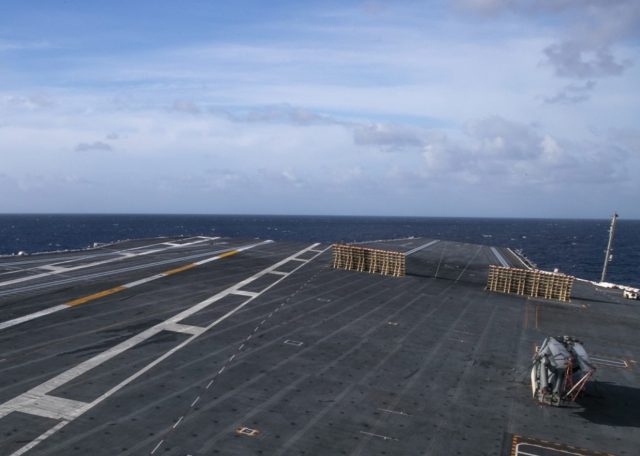The lead ship of the new generation of US Navy aircraft carriers, the USS Gerald R. Ford (CVN 78), completed acoustic and special performance trials in late September as one of the more important components of its post delivery test and trials (PDT&T).
As the Ford is first ship of the navy’s first new carrier design in 40 years, the trials will set the baseline for how future Ford-class aircraft carriers defend against torpedoes.
The tests, completed by Ford’s combat systems department and the Atlantic undersea test and evaluation center (AUTEC) team, consist of a sensor accuracy test, acoustic trials, performance and special trials (PST), and a torpedo evasion exercise.
“Successfully completing the acoustic and performance trials are vital to our ship’s combat readiness as we prepare for operational employment,” said Capt. J.J. Cummings, Ford’s commanding officer. “Our crew was involved in some aggressive training events over the past week as we tested our acoustic signature, confirmed the ship’s maneuverability and validated the effectiveness of torpedo evasion maneuvers. We did some good old fashioned “yanking and banking” on the test range.”

The acoustic trials enabled the development of the Ford-class acoustic profile, providing input for ship’s quiet bill lineup, in addition to how the ship will limit its acoustic signature to minimize anti-surface warfare susceptibility. Additionally, PST provided a baseline on Ford-class powering, maneuvering, and tactical characteristics to include speed and power curves, advance and transfer tables, and acceleration and deceleration tables.
“During performance trials the capabilities of our first-in-class warship were clearly demonstrated,” said Fire Controlman 2nd Class Samuel Lantinga. “The data collected during this underway will be vital in regards to creating our torpedo evasion tactics.”
Road to first operational deployment
USS Gerald R. Ford commissioned in July 2017 but is yet to embark on its maiden operational deployment, as the navy tackles multiple problems presented by the ship’s numerous new technologies. In addition to being the first new design in decades, Ford incorporates over 20 new technologies, including all-new systems for the arming, launching and recovering carrier-based aircraft.
The service is still working on getting all 11 of the ship’s advanced weapon elevators up and running, while the electromagnetic aircraft launch system (EMALS), which is replacing the traditional steam catapults, is still causing problems.
While the navy is making progress on the post delivery trials, it anticipates that Ford will not be able to undertake an operational before at least 2023.
At 1,092 feet in length and 100,000 tons, the Ford-class is designed to support a 33% higher sortie generation rate at a significant cost savings, when compared to Nimitz-class carriers. The navy plans to buy a total of 11 ships in the class to replace the Nimitz-class carriers.



























